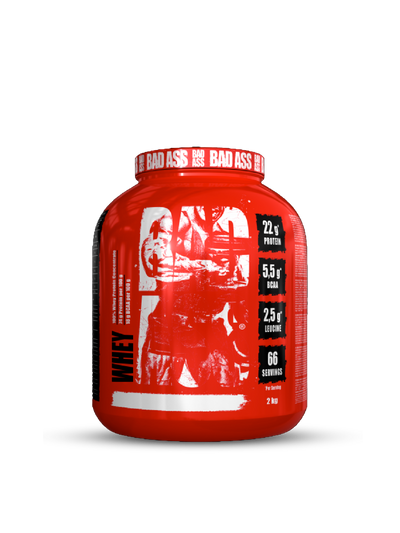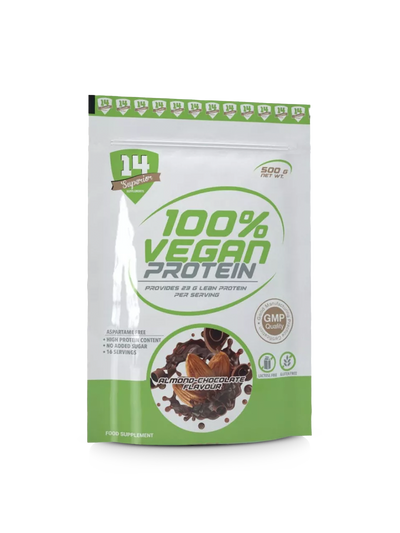Introduction
Muscle recovery is a crucial aspect of any fitness regimen, whether you're an avid athlete or simply trying to stay active. The science of muscle recovery revolves around one essential nutrient: protein. Protein plays a fundamental role in repairing and rebuilding muscle tissue after exercise. In this blog post, we'll delve into the science behind protein and how protein bars, when crafted with the right ingredients, can effectively aid in post-exercise recuperation.
The Role of Protein in Muscle Recovery
The role of protein in muscle recovery is fundamental, as it serves as the key building block for repairing and rebuilding muscle tissue after exercise. To fully grasp how protein bars aid in muscle recovery, it's crucial to understand the intricate processes that occur in your muscles following an intense workout:
- Muscle Damage:
Intense physical activity, particularly resistance training and high-intensity workouts, results in microscopic damage to muscle fibers. This might sound counterproductive, but it's actually a natural and necessary part of the muscle-building process. When you engage in strenuous exercise, you create small tears in your muscle fibers. These tiny tears are what lead to muscle soreness in the hours and days following your workout.
The reason this muscle damage is beneficial is that it prompts your body to adapt and become stronger. As your muscles repair these microtears, they rebuild themselves to withstand similar stress in the future. This adaptive process is what ultimately leads to muscle growth and improved strength.

- Inflammation:
The damaged muscle fibers trigger a localized inflammatory response in your body. Inflammation is a natural defense mechanism, and in this context, it plays a critical role in initiating the muscle repair process. When inflammation occurs, your body sends white blood cells, nutrients, and other healing agents to the damaged area. This helps clear away cellular debris and initiate the repair process by promoting the synthesis of new proteins.
Inflammation is, therefore, a vital part of the recovery process, as it marks the beginning of your body's efforts to heal and strengthen the damaged muscles.
- Protein Synthesis:
To repair and rebuild muscle tissue, your body requires a sufficient supply of amino acids, which are the building blocks of proteins. Amino acids are essential for a process known as protein synthesis, which is the construction of new proteins within muscle cells.
During protein synthesis, your body uses amino acids to rebuild and strengthen the damaged muscle fibers. These newly formed proteins contribute to muscle growth, repair, and overall recovery. Protein synthesis is the mechanism through which your muscles adapt and become more resilient after each workout.
In the context of muscle recovery, protein bars play a crucial role by providing a convenient and readily available source of protein and amino acids. When consumed after a workout, protein bars supply your body with the necessary building blocks to support the repair and growth of muscle tissue. This is particularly important during the post-exercise "anabolic window," a period when your body is most receptive to nutrient intake, making protein bars an ideal choice for a quick and effective recovery snack.
The Timing of Protein Intake
The timing of protein intake is a critical aspect of optimizing muscle recovery and maximizing the benefits of your workout. This timing strategy is often referred to as the "anabolic window." To comprehend the significance of timing protein consumption, let's delve into the concept in detail:

The Anabolic Window:
The anabolic window is a period immediately following your workout when your body is particularly responsive to nutrients, especially protein. During this window, several physiological processes make your muscles more receptive to the nutrients needed for recovery and growth. Here's what happens during this critical phase:
- Increased Blood Flow: After exercise, there's a significant increase in blood flow to your muscles. This enhanced blood circulation helps deliver nutrients, including amino acids from protein, to the muscle cells more efficiently.
- Heightened Sensitivity to Insulin: Physical activity enhances insulin sensitivity. Insulin is a hormone responsible for transporting nutrients, including glucose and amino acids, into muscle cells. During the anabolic window, your muscles become more responsive to insulin, facilitating the uptake of amino acids.
- Protein Synthesis is Elevated: In the hours immediately following exercise, your body's rate of protein synthesis is elevated. This is when your muscles are most active in repairing and rebuilding themselves. Supplying your body with protein during this period provides the necessary amino acids to support these processes.
- Glycogen Replenishment: Consuming protein in combination with carbohydrates during the anabolic window can help replenish glycogen stores more effectively. Glycogen is the stored form of carbohydrates in your muscles, and it's a crucial energy source for future workouts.
Duration of the Anabolic Window:
The exact duration of the anabolic window can vary based on factors such as the intensity and duration of your workout. However, it's generally believed to last for about 30 minutes to two hours after exercise. Here's a rough breakdown:
- High-Intensity Resistance Training: After intense resistance training sessions, the anabolic window is typically open for a shorter duration, around 30 minutes to an hour.
- Endurance Training: Following longer, lower-intensity endurance workouts, the window may remain open for a slightly longer period, up to two hours.

Why Timing Matters:
Taking advantage of the anabolic window by consuming protein during this period offers several benefits:
- Optimal Muscle Repair: The timely supply of amino acids ensures that your muscles have the necessary building blocks to repair and rebuild damaged tissue efficiently.
- Muscle Protein Synthesis: Protein intake during this window supports the heightened rate of muscle protein synthesis, contributing to muscle growth and recovery.
- Reduced Muscle Soreness: Adequate protein consumption post-workout can help reduce muscle soreness and promote quicker recovery.
- Improved Performance: Proper recovery leads to better overall performance during subsequent workouts.
Protein Sources During the Anabolic Window
While the anabolic window is a prime time to consume protein, it's essential to choose protein sources wisely. High-quality protein sources like whey, casein, or plant-based proteins provide a complete spectrum of essential amino acids that are ideal for muscle recovery.
Protein Bars as a Convenient Solution
Protein bars have become a popular choice for individuals looking to support their muscle recovery and overall nutritional needs, thanks to their convenience and balanced nutrient profile. Let's delve into the advantages of protein bars as a convenient solution for post-workout recovery:
1. Rapid Absorption:
Many protein bars are formulated with protein sources that are highly digestible and quickly absorbed by the body. This fast absorption is advantageous because it ensures that essential amino acids reach your muscles promptly, which is crucial for jumpstarting the recovery process.
- Whey Protein: Whey protein, commonly found in protein bars, is a fast-digesting protein. It contains all essential amino acids, making it an excellent choice for muscle recovery. Whey protein's rapid absorption rate means that amino acids become available for muscle repair and growth shortly after consumption.
- Pea Protein: Some plant-based protein bars use pea protein, which is also known for its digestibility and amino acid profile. While not as fast as whey, it is still a valuable source of post-workout protein.
By consuming protein bars with easily digestible protein sources, you can accelerate the recovery process and minimize the time it takes for your muscles to start repairing and rebuilding.
2. Balanced Nutrient Profile:
Protein bars often offer a well-balanced nutrient profile, combining not only protein but also carbohydrates, fats, and sometimes additional vitamins and minerals. This balance of nutrients provides several benefits for muscle recovery:
- Glycogen Replenishment: Carbohydrates in protein bars can help replenish glycogen stores in your muscles. Glycogen is the primary energy source during physical activity, and refilling these stores is essential for sustained performance and future workouts.
- Reduced Muscle Soreness: Some protein bars contain ingredients like antioxidants, omega-3 fatty acids, or anti-inflammatory compounds that can help reduce muscle soreness and inflammation following intense exercise.
- Vitamins and Minerals: Protein bars fortified with vitamins and minerals can contribute to overall recovery and help meet your daily nutritional needs.
The balanced nutrient profile of protein bars makes them a versatile option for post-workout recovery, addressing not only protein requirements but also energy replenishment and muscle soreness reduction.
3. Portability:
One of the primary advantages of protein bars is their portability. They are incredibly convenient to carry and require no preparation. This makes them an ideal post-workout snack, especially for those with busy lifestyles or when you're on the go.
Whether you're leaving the gym, heading to work, or traveling, protein bars can be stashed in your bag or pocket, ensuring that you have a quick and nutritious option readily available after your workout. Their convenience eliminates the need for refrigeration or any additional utensils, making them a hassle-free choice for busy individuals.

Choosing the Right Protein Bar
Not all protein bars are created equal, and their effectiveness in aiding muscle recovery depends on their ingredients. Here are some key considerations when choosing a protein bar for post-exercise recuperation:
- Protein Content: Look for bars with a sufficient amount of protein, typically around 15-20 grams, to provide the amino acids needed for muscle repair.
- Protein Source: High-quality protein sources such as whey, casein, or plant-based proteins like soy or pea offer a complete spectrum of amino acids, ideal for muscle recovery.
- Carbohydrate Content: Including carbohydrates in your post-workout bar can enhance glycogen replenishment and overall recovery. Aim for a balanced ratio of protein to carbohydrates.
- Low Sugar: Avoid bars with excessive added sugars, as they can hinder the absorption of nutrients and may lead to energy crashes.
- Minimal Additives: Opt for bars with minimal artificial additives and fillers, focusing on natural ingredients for optimal nutrition.
Conclusion
In the realm of muscle recovery, the science of protein is clear: it's a vital nutrient that aids in repairing and rebuilding muscle tissue. Protein bars, when thoughtfully crafted with the right ingredients, offer a convenient and effective way to provide your body with the essential amino acids and nutrients needed for post-exercise recuperation. By understanding the science behind muscle recovery and making informed choices about your protein bar selection, you can support your fitness goals and optimize your recovery process. Remember, the right protein bar can be your ally in achieving peak performance and muscle health.








